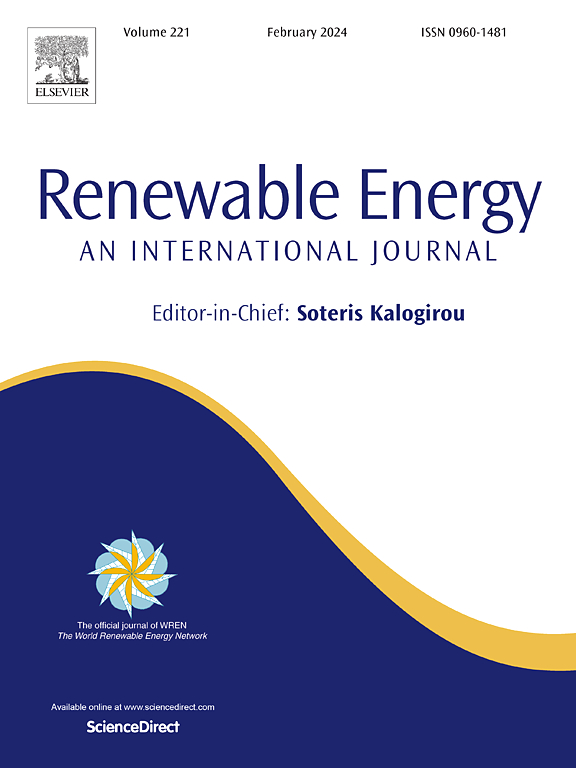Effect of fracture geometry characteristics on thermal convection of basin-scale groundwater
IF 9.1
1区 工程技术
Q1 ENERGY & FUELS
引用次数: 0
Abstract
This study investigates fracture geometry impacts on basin-scale groundwater thermal convection, focusing on aperture, length, inclination, and density. A two-dimensional numerical model evaluates interactions between forced and free thermal convection using temperature fields and Rayleigh numbers. In our scenario, larger fracture apertures tend to enhance forced thermal convection, while fractures whose apertures larger than 0.08 m will promote free thermal convection to some extent. Increased length and density expand heat transfer areas, yet rapid fluid flow through preferential pathways may reduce efficiency. Equilibrium occurs at 300 m length and 50 fractures, beyond which forced convection raises the critical Rayleigh number threshold by 2–4 times. Fractures at 45° inhibit free convection by forming "V"-shaped channels that enhance forced convection, increasing thresholds by 1.5–3.2 times. Through sensitivity analysis, fracture length and density were identified as the most influential factors among geometric characteristics. Additionally, we defined the heat extraction rate of geothermal systems and found that optimal geothermal targets in fractured karst reservoirs require larger apertures, moderate lengths (300 m), 45° intersections, and moderate densities (50 fractures). These findings provide valuable insights into optimizing geothermal resource exploitation, highlighting the role of fracture networks in shaping groundwater heat transfer dynamics.
裂缝几何特征对盆地地下水热对流的影响
本研究研究了裂缝几何形状对盆地尺度地下水热对流的影响,重点研究了裂缝的孔径、长度、倾角和密度。一个二维数值模型利用温度场和瑞利数来评估强迫和自由热对流之间的相互作用。在我们的场景中,较大的裂缝孔径往往会增强强制热对流,而大于0.08 m的裂缝会在一定程度上促进自由热对流。增加的长度和密度扩大传热面积,但快速流体流动通过优先路径可能会降低效率。平衡发生在300 m长度和50个裂缝处,超过300 m,强迫对流使临界瑞利数阈值提高2-4倍。45°裂缝通过形成“V”形通道抑制自由对流,增强强制对流,使阈值提高1.5 ~ 3.2倍。通过敏感性分析,确定裂缝长度和密度是几何特征中影响最大的因素。此外,我们定义了地热系统的热提取率,发现裂缝性岩溶储层的最佳地热目标需要较大的孔径、中等长度(300 m)、45°相交和中等密度(50条裂缝)。这些发现为优化地热资源开发提供了有价值的见解,突出了裂缝网络在塑造地下水传热动力学中的作用。
本文章由计算机程序翻译,如有差异,请以英文原文为准。
求助全文
约1分钟内获得全文
求助全文
来源期刊

Renewable Energy
工程技术-能源与燃料
CiteScore
18.40
自引率
9.20%
发文量
1955
审稿时长
6.6 months
期刊介绍:
Renewable Energy journal is dedicated to advancing knowledge and disseminating insights on various topics and technologies within renewable energy systems and components. Our mission is to support researchers, engineers, economists, manufacturers, NGOs, associations, and societies in staying updated on new developments in their respective fields and applying alternative energy solutions to current practices.
As an international, multidisciplinary journal in renewable energy engineering and research, we strive to be a premier peer-reviewed platform and a trusted source of original research and reviews in the field of renewable energy. Join us in our endeavor to drive innovation and progress in sustainable energy solutions.
 求助内容:
求助内容: 应助结果提醒方式:
应助结果提醒方式:


